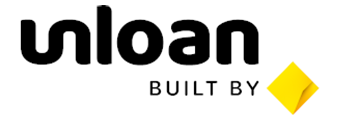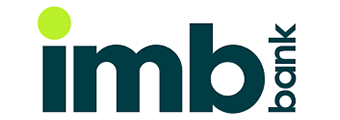One of the first (and arguably most impactful) decisions a prospective mortgage borrower will face is between principal and interest and interest only repayments. Both options have their advantages and disadvantages, and it's important homeowners and investors understand how each could better or worsen their financial situation.
Principal and interest vs interest only: What's the difference?
The core difference between P&I and IO repayments lies in whether you're paying down the loan's principal.
-
Principal and interest (P&I): Your repayments reduce the borrowed amount (principal) and cover the interest charged by the lender. Over time, you reduce your loan balance and build equity in your home.
-
Interest only (IO): You only pay the interest, leaving the principal balance untouched. This keeps repayments lower in the short term but doesn't reduce your debt, meaning you won't build equity unless your property's value appreciates.
Most lenders allow interest only repayments for a limited period (typically one to five years), after which the loan reverts to P&I unless refinanced.
Why choose a principal and interest mortgage?
Principal and interest (P&I) is the most common repayment type offered on home loans.
As you gradually pay down the principal, the remaining balance on which interest is calculated will decrease. That means the interest portion of your repayments will gradually shrink while the principal portion will slowly grow, assuming your interest rate remains constant. If you use an offset account or make extra repayments, the size of your repayments will stay the same but less of it will go towards interest and more towards repaying the principal.
Benefits of principal and interest repayments
-
Equity building
As you pay down your home loan's principal balance, you'll own more of the property outright. -
Lower interest costs
You'll pay less in interest as the years go on. -
Lower interest rates
Principal and interest home loans generally offer lower interest rates than interest only mortgages.
Drawbacks of principal and interest repayments
-
Higher repayments
Principal and interest repayments are higher than interest only repayments, since they include both principal and interest. -
Greater equity building
While typically a good thing, paying down the principal may not match a property investor's financial goals, as they're often able to deduct mortgage interest from their taxable income while repaying principal can reduce cash flow.
looking for a competitive principal and interest home loan? We've compiled some of the market's best:
Lender Home Loan Interest Rate Comparison Rate* Monthly Repayment Repayment type Rate Type Offset Redraw Ongoing Fees Upfront Fees Max LVR Lump Sum Repayment Extra Repayments Split Loan Option Tags Features Link Compare Promoted Product Disclosure
Promoted
Disclosure
Disclosure
Promoted
Disclosure
Why choose an interest only home loan?
If you're making interest only repayments, you'll only need to pay the interest accruing on the loan. This means your repayments will be lower and the amount you owe will stay the same.
Typically, home loan lenders will only allow a borrower to make interest only repayments for a few years, after which a borrower might choose to refinance to once again make interest only repayments.
Benefits of interest only repayments
-
Lower repayments
Since you're not paying off any of the principal while making interest only repayments, regular repayments will be lower. -
Investment flexibility
Many investors prefer interest only loans as it frees up cash flow, potentially allowing them to invest more elsewhere. -
Tax benefits for investors
Interest charges on an investment home loan can be tax deductible, reducing an investors' income tax liability and freeing up cash flow.
Drawbacks of interest only repayments
-
Less equity build-up
A homeowner making interest only repayments won't build equity by repaying the borrowed funds. Though, they might build equity if their property's value rises. -
Higher overall interest costs
As the principal isn't reduced, interest only repayments will result in greater interest expenses. -
Repayment shock
You may face a significant increase in monthly payments or face refinancing costs when the interest only period ends.
In the market for an interest only home loan? Check out some of the most competitive rates available now:
Lender Home Loan Interest Rate Comparison Rate* Monthly Repayment Repayment type Rate Type Offset Redraw Ongoing Fees Upfront Fees Max LVR Lump Sum Repayment Extra Repayments Split Loan Option Tags Features Link Compare Promoted Product Disclosure
Which repayment type best suits your financial goals?
Whether principal and interest or interest only repayments are best for you will depend on your financial goals, circumstances, and investment strategy.
Here are some common financial goals and how different repayment types may align with them. While this isn't financial advice, it offers insights into key factors that may impact your decision.
Goal: Pay off your home loan
If your ultimate goal is to own your home outright, P&I repayments are likely the best choice.
Goal: Build equity
Playing the long game and focusing on building wealth? P&I repayments help you build equity faster by gradually reducing your loan balance. Think of the higher monthly repayments as an investment – not just in paying off debt, but in securing a financial asset.
Goal: Minimise interest costs
Want to pay the least amount of interest over the life of your loan? P&I repayments are the way to go. Since interest is calculated based on your outstanding loan balance, paying down the principal sooner reduces the total interest paid. Additionally, lenders typically charge higher rates to borrowers making IO repayments.
Goal: Increase cash flow
If you're looking to reduce monthly housing costs and free up cash flow, IO repayments could offer short-term relief. Because you're only covering the interest (not the principal), your repayments are lower. This is a common strategy for borrowers facing temporary financial strain or seeking to allocate funds elsewhere. However, keep in mind that IO home loans generally cost more in the long run.
Goal: Flipping property
Looking to build equity quickly before selling for a profit? Property flippers often prefer IO repayments as they keep loan costs low while they renovate and sell.
Goal: Portfolio building
If your aim is to expand your property investments, IO repayments may help. By minimising loan repayments, you can redirect funds into acquiring more properties or other investments. This approach is popular among investors who prioritise capital growth and rental yield over immediate equity building.
Switching from IO to P&I: what should you expect?
If you're considering switching from IO to P&I (or vice versa), here's what to expect:
Switching from interest only to principal & interest repayments
-
Higher monthly repayments
Expect a significant jump in repayments when your loan converts to P&I, as you'll begin repaying both the principal and interest. -
Faster equity growth
Transitioning to P&I means you'll start reducing your home loan balance and increasing your ownership in the property. -
Possible refinancing needs
If the jump in repayments is too steep, some borrowers may seek to refinance into another IO loan or negotiate better P&I terms with their lender.
Switching from principal & interest to interest only
-
Lower immediate repayments
IO repayments will reduce your regular financial obligations, which may help with cash flow. -
Higher long-term costs
While your repayments will be lower in the short term, you'll end up paying more interest over the life of the loan. -
Lender approval required
Not all lenders will automatically approve a switch to IO, and you may need to meet stricter lending criteria.
This article was originally written by Emma Duffy.
Image by Artful Homes on Unsplash
First published in March 2024
Collections: Mortgage Repayment Interest Only Home Loan News & Guides










Share